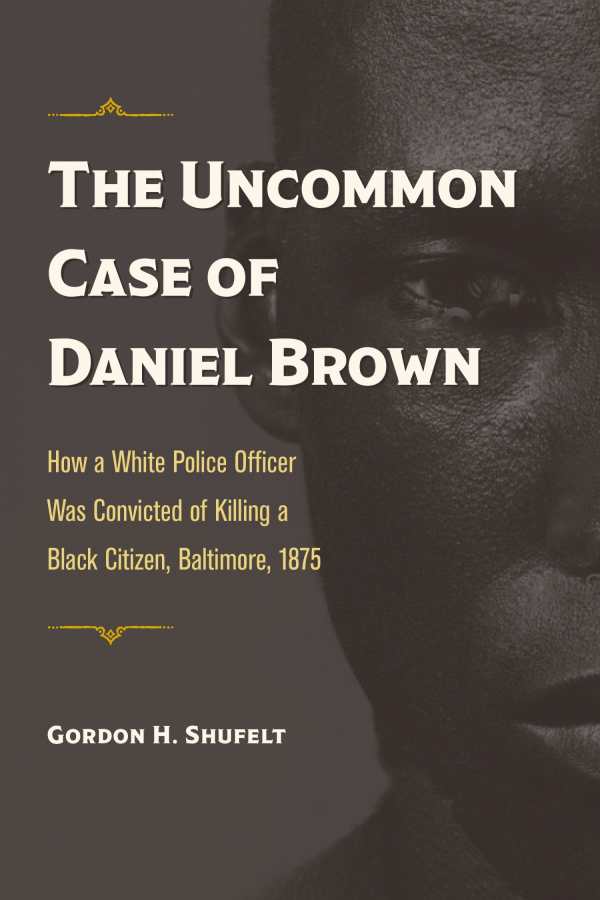The Uncommon Case of Daniel Brown
How a White Police Officer Was Convicted of Killing a Black Citizen, Baltimore, 1875
Historian Gordon H. Shufelt’s true crime book recounts the 1875 murder of a Black man by a white policeman. While racial police brutality is still not uncommon, the grim distinction surrounding Daniel Brown’s death is that, in late nineteenth-century Baltimore, this particular officer was convicted.
Shufelt details the socioeconomic backgrounds of Brown and Officer Patrick McDonald, along with their city’s political climate. In the bustling, post-Civil War environment, Baltimore’s Black American population competed with immigrants for jobs and status. Racism against Black people persisted, while prejudice from “native” white Americans was also directed toward new European arrivals.
As Baltimore grew, so did its police force. Officers subdued mobs and street criminals, but abuse complaints regarding the police soon became frequent, from white and Black citizens. In this climate, Brown was hardworking, married, and well-regarded. Records indicate no previous arrests or confrontational events, beyond Brown’s being, as his landlord noted, “a little strong” regarding “Civil Rights questions.” McDonald, on the other hand, came to America to escape the horrific Irish famine, which is described with intensity. He worked among a squad of white-only officers; though he was called “peaceable” at his trial, he exhibited other instances of aggressive behavior.
With factual suspense, the book reconstructs the fateful meeting between Brown and McDonald. A noise complaint regarding a small, non-alcoholic party somehow escalated into Brown being clubbed and shot in his own home. Witnesses recalled McDonald being angry and antagonistic. McDonald, however, insisted that he acted in self-defense.
McDonald was found guilty by a white jury—a verdict, Shufelt says, that was intended to quell police overreach, rather than support racial equality. Due to a sentencing error, he served little jail time. In this engrossing chronicle, however, Shufelt concludes not with disbelief that justice for Brown was miscarried, but that it was carried out at all.
Reviewed by
Meg Nola
Disclosure: This article is not an endorsement, but a review. The publisher of this book provided free copies of the book to have their book reviewed by a professional reviewer. No fee was paid by the publisher for this review. Foreword Reviews only recommends books that we love. Foreword Magazine, Inc. is disclosing this in accordance with the Federal Trade Commission’s 16 CFR, Part 255.

